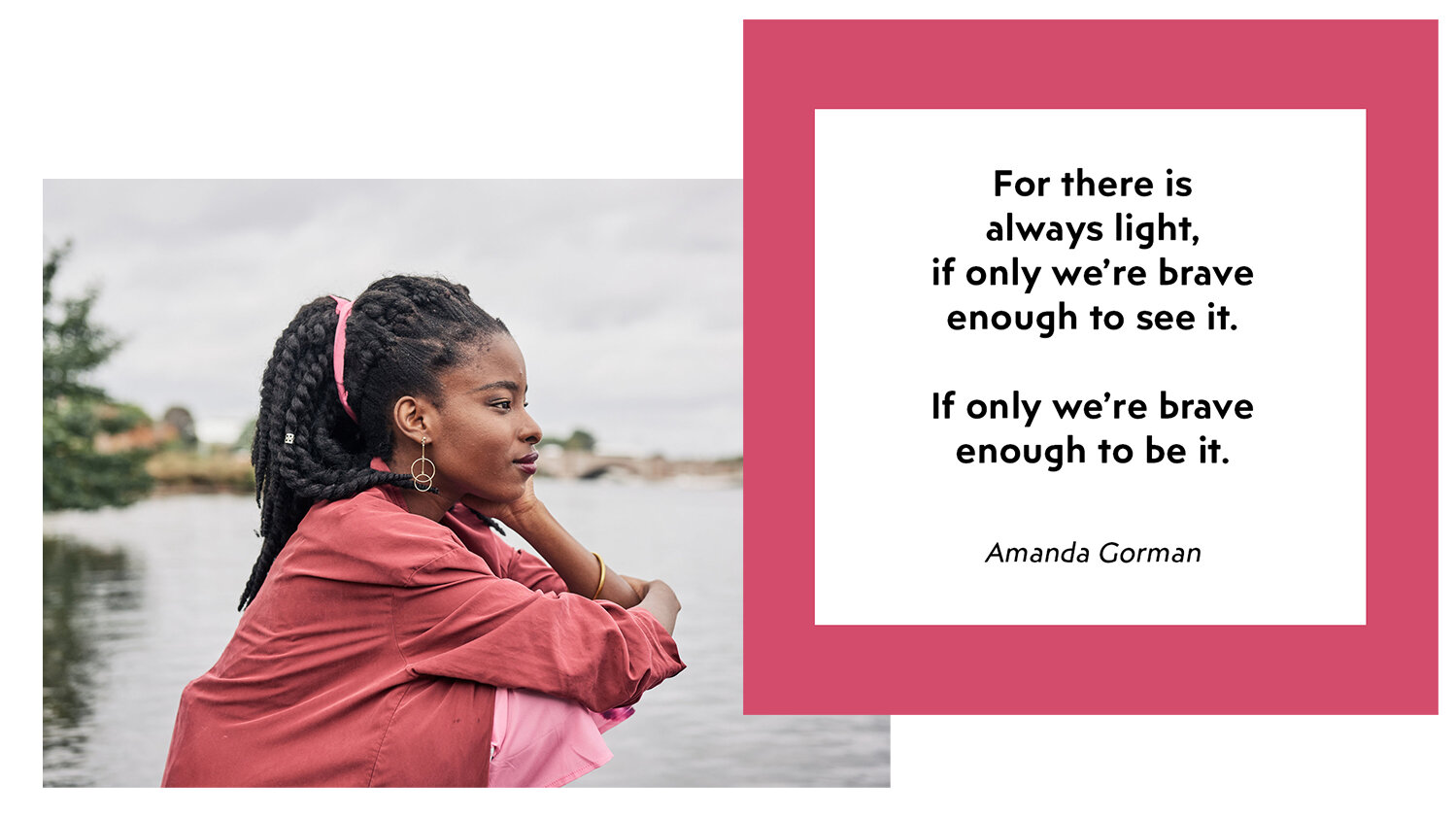Spotlight: Amanda Gorman
Photo: Cultured Magazine
Amanda Gorman, born and raised in Los Angeles, California, is a 23-year-old African American writer, poet, activist, and change maker. She is a Harvard University graduate and was named the First National Youth Poet Laureate in 2017. The purpose of the National Youth Poet Laureate program is to “celebrate [the] nation’s top youth poets that are committed to artistic excellence, civic engagement, and social justice.” Without a doubt, Gorman embraces that mission.
Photos: Amanda Gorman
Most recently, she received international recognition for her recitation of her original poem, “The Hill We Climb,” at President Joe Biden’s inauguration in January 2021. You can watch her performance here and read the original text here. Since then, she has recited at the Super Bowl and will soon publish three books. Gorman’s poetry centers on the lived experiences of African Americans, past and present, racial justice, unity, and equity. She firmly believes in the power of art as the language of the people, especially in movements for change.
Gorman herself is inspired by works written by accomplished African American women, such as Toni Morrison, Maya Angelou, Sonia Sanchez, and Phillis Wheatley. Though some may view poetry as boring and out-of-date, she challenges the notion that poetry is elitist. The definition of “classic poets” must be expanded to incorporate artists from all walks of life, Gorman argues. Her poetry is in fact strengthened by her unique identity — she is a young Black woman, a twin sister, the daughter of a single parent, and an individual with a speech difficulty. All of these aspects of her life and more weave their way into her poetry and help her tell her own, authentic story and connect with her audience.
Three questions to help you critically analyze a creative work
Gorman’s poetry, like any other piece of creative content, encourages interpretation. Diverse audiences may take away entirely different meanings from a poem, piece of art or clothing, dance number, or song. There is no one “right” meaning — which arguably makes analysis both easier and more challenging at the same time! Here are three questions that can help you think more critically about a creative work.
To whom is the artist trying to speak? Who is their audience? Does the audience change over the course of the work?
What is the effect of certain creative choices, i.e. figurative language, colors, movement, sounds, etc. Why are they significant to the overall piece?
In your opinion, what is the central purpose or message of the piece? Would the artist agree or disagree with you?
Photo: Conversations About Her
For example, consider this line from Gorman’s poem, “The Hill We Climb.” She writes, “We lay down our arms so we can reach out our arms to one another.”
What stands out to me immediately is the dual meaning of “arms:” as physical body parts and guns. This mention of arms reflects on calls for gun reform in the United States in the wake of mass shootings as well as the legacy of the Second Amendment and the politics associated with it.
Photo: The New York Times
There is also clear imagery of reaching across the aisle and promoting unity, a sentiment which is repeated later in the poem when Gorman writes, “Then victory won’t lie in the blade, but in the bridges we’ve made.” In my opinion, Gorman’s purpose with this line is to remind Americans (and arguably everyone around the world) that we are stronger together and that we should “lift our gazes not to what stands between us // but what stands before us” in order to move towards a brighter, hopeful, and more equitable future for all.
ABOUT THE AUTHOR
A Texas native, Bianca Navia is currently in her senior year at Arizona State University pursuing a dual major in Political Science and Global Studies. She is most passionate about international affairs, diplomacy, foreign languages, traveling, and teaching. A fun fact about her? She’s the oldest of four sisters in a big Cuban-Italian-American family!






